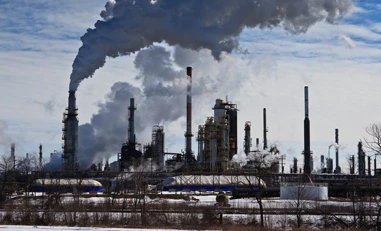We’ve all had our moments of frustration with the unending negotiations on mechanisms to control carbon dioxide emissions. In the last Conference of Parties held at Durban in 2011, it was decided that the global deal for the post Kyoto framework will only be reached by 2015.
Meanwhile, the climate clock is ticking: countries continue to face the impacts of climate change with the poorest being hardest hit. Science has shed the spotlight on a “parallel track” which could help us deal with part of the climate change problem in a faster, cheaper way – it is tackling short-lived climate pollutants (SLCPs), primarily black carbon, methane, and hydrofluorocarbons (HFCs).
These pollutants, while being extremely potent in terms of their global warming potential are short-lived in the atmosphere. For example, black carbon persists in the atmosphere for about two weeks (compared to CO2 that lives for up to 100 years) and is 917 times more warming than CO2 over a 100 year timeframe (and 3,320 times over 20 years).So, action on SCLPs can help buy time in addressing the more important and longer-term greenhouse gas (GHG) emissions.
The World Bank works in sectors that emit SLCPs. For example black carbon (BC) is a component of “soot”, consisting of darkly colored, fine airborne particles (aerosols) produced during incomplete combustion of fossil fuels or biomass by power utilities, waste operations, households, industry and transport. It is not a greenhouse gas but contributes to global warming by absorbing visible solar radiation in the atmosphere. As a result, when it settles on ice or snow, it leads to faster melting. Click here to read the World Bank report on black carbon and climate change considerations.
There have been a number of studies (Methane Emission Reduction Potential (pdf), Simultaneously Mitigating Near-Term Climate Change and Improving Human Health and Food Security) that show that SLCPs are harmful to health and the local environment while also having a significant impact on global climate change. The United Nations Environment Programme has recently undertaken one of the most comprehensive reports focusing on actions to address SLCPs. The findings have galvanized several global initiatives in the last few months, including several events at the recent Rio+20 conference. One of those saw participation from President Clinton, Mayor Bloomberg, and our own Vice President Rachel Kyte. (See the amateur video posted on Youtube)
The biggest intergovernmental effort initiated recently to address SLCPs is the Climate and Clean Air Coalition that aims to support countries to reduce the impacts of these pollutants. The United Stated along with the Governments of Bangladesh, Canada, Ghana, Mexico, and Sweden launched the coalition in February 2012. The launch meeting was organized by the US State Department in Washington DC with Secretary of State Hillary Clinton announcing the coalition.
The CCAC has since grown to almost 20 members, with all the G8 countries joining the CCAC during the last summit at Camp David. The coalition commissioned the World Bank “…to prepare a report on ways to integrate reduction of near-term climate pollution into their activities and ask the World Bank to bring together experts from interested countries to evaluate new approaches to financing projects to reduce methane, including through pay-for-performance mechanisms.”
The World Bank Group has numerous projects that we implement that help reduce SLCPs. For example, a back of the envelope analysis for methane and black carbon showed about $12 billion of investments, or 140 projects, approved between 2006-11 support SLCP reductions. These include investment in everything from cleaner fuels, better urban landfill management and cleaner cookstoves. We also support important partnerships to reduce SLCPs, such as the Global Gas Flaring Reduction Partnership (GGFR) which works with governments and companies in reducing the flaring and venting of associated gas . The Montreal Protocol, for which the World Bank serves as an implementing agency, is now actively promoting alternatives to HFCs where available. HFCs are human-created gases used to replace ozone depleting substances but which are strong, short-lived global warmers by themselves.
World-wide gas flaring and venting activities add about 350 million tons of CO2 equivalent; while venting is a major source of methane, flaring is a significant source of black carbon, though volumes in both cases (at the global level) are still unknown. A field study in Uzbekistan showed that one flare stack emitted as much black carbon per second as about 500 diesel buses. GGFR is currently funding cutting-edge research into methodologies that will help quantify and identify the black carbon – invisible to the naked eye – so that it can be tackled. (Watch this demo on a new tool that quantifies black carbon emissions from a gas flare in Mexico.)
I think dealing with SLCPs is a very good example of a triple win. These are good development solutions that reduce local pollution and its impacts on health and agricultural production, and help address the global challenge of climate change without getting mired in controversy over global commitments.
Slowing climate change, improving health outcomes and improving food production – not a bad day’s work!
As part of our contribution to the Climate and Clean Air Coalition,,we will be zooming into these issues and gathering more evidence on the nature and impact of SLCPs through our portfolio, and what we can do to improve the evidence and analysis around them, and address them, including through innovative financing mechanisms.



Join the Conversation